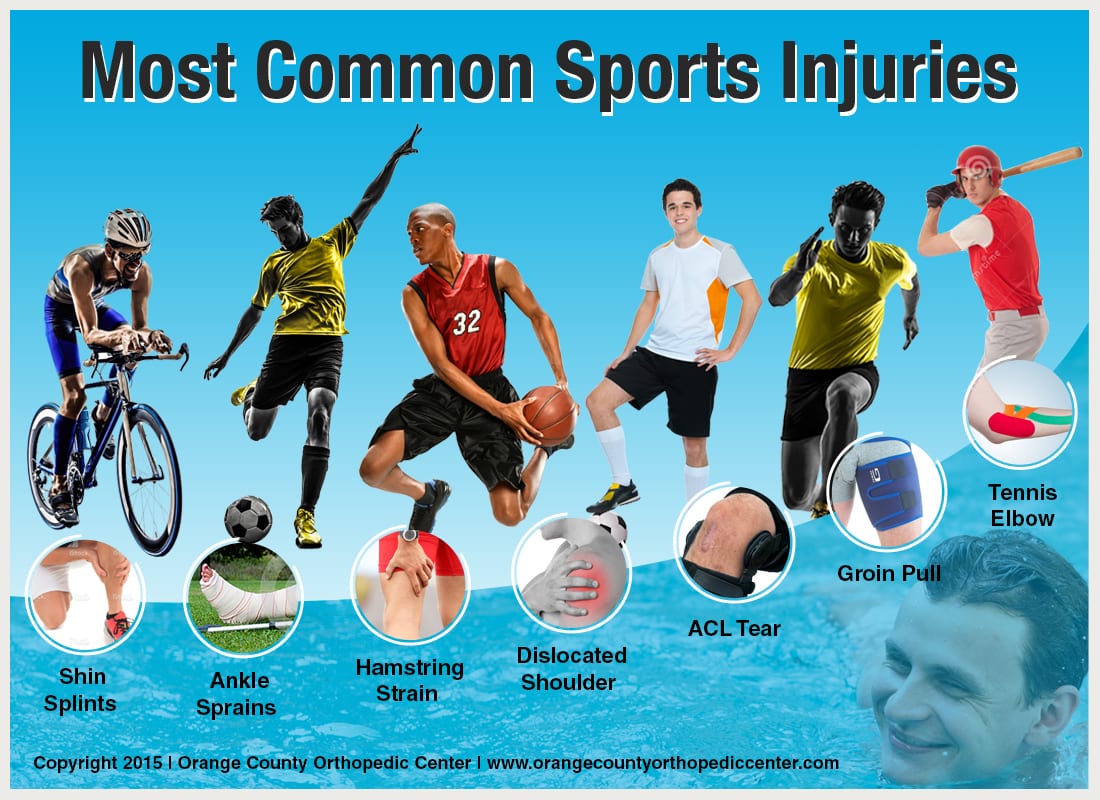Understanding the Landscape of Athletic Injuries
In the world of athletics, one of the most pressing issues athletes face is injuries. It’s a common scenario that impedes an athlete’s performance and can even halt their career altogether. The trick to ‘Preventing common injuries in athletics’ is understanding the landscape of these injuries and developing preventive strategies accordingly.
Injuries in athletics can range from minor strains and sprains to more severe injuries like fractures or ligament tears. Each type of injury requires a different approach to healing and prevention. Some of the most common injuries include runner’s knee, tennis elbow, shin splints, and ankle sprains. These injuries can have significant impacts on an athlete’s performance, often requiring time away from the sport for recovery.

While these injuries can be debilitating, what’s more alarming is the long-term health implications they might have. For instance, athletes with a history of concussions are at a higher risk of developing neurological conditions later in life. This underscores the importance of prevention strategies in athletics.
Preventing these injuries isn’t just about immediate performance, but also about protecting the athlete’s long-term health and wellbeing. However, despite advances in sports science, the prevention of athletic injuries is often overlooked, leading to a high prevalence of these injuries. This lack of focus on injury prevention can be attributed to a variety of factors, including a lack of awareness and information, and an overemphasis on performance at the expense of athlete health.
In the future, there needs to be a stronger emphasis on injury prevention in athletics, both from sports organizations and athletes themselves. This could include more comprehensive training programs that incorporate injury prevention techniques, more stringent enforcement of safety protocols, and greater education about the long-term implications of athletic injuries.
In conclusion, understanding the landscape of athletic injuries is the first step in preventing them. By acknowledging the prevalence and impact of these injuries, athletes can begin to prioritize injury prevention in their routines. The goal is not just to enhance performance, but also to protect the long-term health and wellbeing of athletes.
The Role of Proper Training in Injury Prevention
Preventing common injuries in athletics doesn’t just happen; it’s a deliberate process that starts with proper training. When athletes understand the importance of correct training techniques, they set the foundation for a healthy and injury-free sporting life.
Training, in the context of sports, goes beyond just practicing your sport. It involves targeted exercises and routines designed to strengthen the body, improve flexibility, and enhance performance. More importantly, when done right, these exercises can significantly minimize the risk of injuries.

Professional trainers and healthcare professionals play a crucial role in this process. They provide athletes with the knowledge and skills to optimize their training. For example, an athlete could be taught how to perform specific exercises that strengthen their most vulnerable muscles, reducing the risk of strains or tears.
Moreover, trainers can educate athletes on the proper use of training equipment and the importance of warm-ups and cool-downs. They can also guide athletes on how to increase their training intensity safely, avoiding overexertion that can lead to injuries.
From a future perspective, it’s important to consider the role of technology in athletic training. Wearable devices that track biometrics can provide valuable insights into an athlete’s performance. These devices can alert athletes when they’re pushing too hard or if their form is incorrect, both of which can lead to injuries.
However, even the best training strategies can fall short if not tailored to the athlete. Athletes are not a monolith; what works for one may not work for another. Therefore, training programs need to be individualized, taking into account the athlete’s unique strengths, weaknesses, and goals.
In the grand scheme of ‘Preventing common injuries in athletics’, the role of proper training cannot be overstated. However, this is not a static field. As our understanding of the human body and sports science continues to grow, so too should our training techniques and injury prevention strategies.
How to Incorporate Injury Prevention into Your Training Routine
When it comes to ‘Preventing common injuries in athletics’, incorporating injury prevention strategies into your training routine is crucial. By following these actionable tips, athletes can minimize the risk of injuries and optimize their performance.
**1. Warm-up and Cool-down:** Start each training session with a dynamic warm-up to increase blood flow and prepare the muscles for activity. Afterward, cool down with static stretches to improve flexibility and prevent muscle tightness.
**2. Strengthening Exercises:** Include exercises that target specific muscle groups prone to injury. For example, if you’re a runner, focus on strengthening your glutes, quadriceps, and calves to reduce the risk of knee and ankle injuries.
**3. Balance and Stability Training:** Incorporate exercises that improve balance and stability, such as single-leg squats or balance board exercises. These exercises help athletes maintain control and prevent falls or twists that can lead to injuries.
**4. Cross-Training:** Engage in activities other than your primary sport to improve overall fitness and reduce the risk of overuse injuries. Cross-training allows for recovery while still maintaining physical fitness.
**5. Listen to Your Body:** Pay attention to any signs of pain, discomfort, or fatigue during training. Pushing through pain can lead to more severe injuries. Rest when needed and seek medical attention if necessary.
**6. Proper Technique:** Ensure you are using proper technique and form during exercises and movements. Incorrect form can put unnecessary stress on joints and muscles, increasing the risk of injury.

Remember, injury prevention is an ongoing process. As you progress in your training, continually reassess and modify your routine to address any weaknesses or imbalances. It’s also essential to stay up to date with the latest research and recommendations in sports science to optimize your injury prevention strategies.
In conclusion, incorporating injury prevention into your training routine is key to ‘Preventing common injuries in athletics’. By following these tips and staying proactive, athletes can reduce the risk of injuries and maintain their performance at the highest level.
Nutrition and Injury Prevention: An Underrated Duo
When it comes to ‘Preventing common injuries in athletics’, the role of nutrition in injury prevention cannot be overstated. A balanced diet not only fuels athletic performance but also plays a crucial role in strengthening the body’s resilience and expediting recovery.
Certain nutrients, such as protein, omega-3 fatty acids, and antioxidants, have been shown to aid in muscle repair and reduce inflammation, thereby contributing to injury prevention. Highlighting the importance of these nutrients in a balanced diet can provide athletes with the tools they need to maintain peak physical condition and reduce the risk of injuries.
Hydration is another vital aspect of injury prevention. Dehydration can lead to muscle cramps, fatigue, and impaired cognitive function, all of which increase the likelihood of injuries. Emphasizing the significance of proper hydration as part of an athlete’s daily routine is essential for injury prevention.

Looking ahead, innovative approaches to nutrition, such as personalized meal plans tailored to individual athletes’ needs, could revolutionize injury prevention in athletics. By leveraging advanced nutritional science and technology, athletes can optimize their diets to enhance their physical resilience and reduce the risk of injuries.
In conclusion, the relationship between nutrition and injury prevention is an underrated duo in athletics. By shedding light on the impact of a balanced diet and proper hydration, athletes can proactively reduce the risk of injuries and maintain their competitive edge.
Importance of Rest and Recovery in Avoiding Injuries
In the realm of athletics, the critical role of rest and recovery cannot be overstated when it comes to ‘Preventing common injuries in athletics’. Adequate rest is not just a luxury but a necessity for athletes to maintain peak performance and avoid injuries.
Overtraining is a common pitfall for many athletes. Pushing the body beyond its limits without allowing for sufficient rest can lead to fatigue, decreased performance, and an increased risk of injuries. By highlighting the concept of overtraining, athletes can recognize the importance of balancing intense training with adequate rest.

Moreover, rest is when the body undergoes repair and adaptation to the stresses placed upon it during training. It’s during this phase that muscles rebuild and strengthen, and the risk of overuse injuries decreases. Emphasizing the significance of rest as part of an athlete’s routine is crucial for injury prevention and long-term athletic success.
Looking ahead, innovative approaches to monitoring and optimizing rest and recovery, such as wearable devices that track sleep quality and recovery metrics, could revolutionize injury prevention in athletics. By leveraging advanced technology, athletes can gain insights into their recovery needs and adjust their routines accordingly.
In conclusion, the importance of rest and recovery in avoiding injuries is paramount for athletes. By acknowledging the critical role of rest and exploring innovative approaches to optimize recovery, athletes can proactively reduce the risk of injuries and maintain their competitive edge.
Rest and Recovery
Rest and recovery play a pivotal role in the realm of athletics, especially when it comes to ‘Preventing common injuries in athletics’. Adequate rest is not just a luxury but a necessity for athletes to maintain peak performance and avoid injuries.
Overtraining is a common pitfall for many athletes. Pushing the body beyond its limits without allowing for sufficient rest can lead to fatigue, decreased performance, and an increased risk of injuries. By highlighting the concept of overtraining, athletes can recognize the importance of balancing intense training with adequate rest.
Moreover, rest is when the body undergoes repair and adaptation to the stresses placed upon it during training. It’s during this phase that muscles rebuild and strengthen, and the risk of overuse injuries decreases. Emphasizing the significance of rest as part of an athlete’s routine is crucial for injury prevention and long-term athletic success.
Looking ahead, innovative approaches to monitoring and optimizing rest and recovery, such as wearable devices that track sleep quality and recovery metrics, could revolutionize injury prevention in athletics. By leveraging advanced technology, athletes can gain insights into their recovery needs and adjust their routines accordingly.
In conclusion, the importance of rest and recovery in avoiding injuries is paramount for athletes. By acknowledging the critical role of rest and exploring innovative approaches to optimize recovery, athletes can proactively reduce the risk of injuries and maintain their competitive edge.

